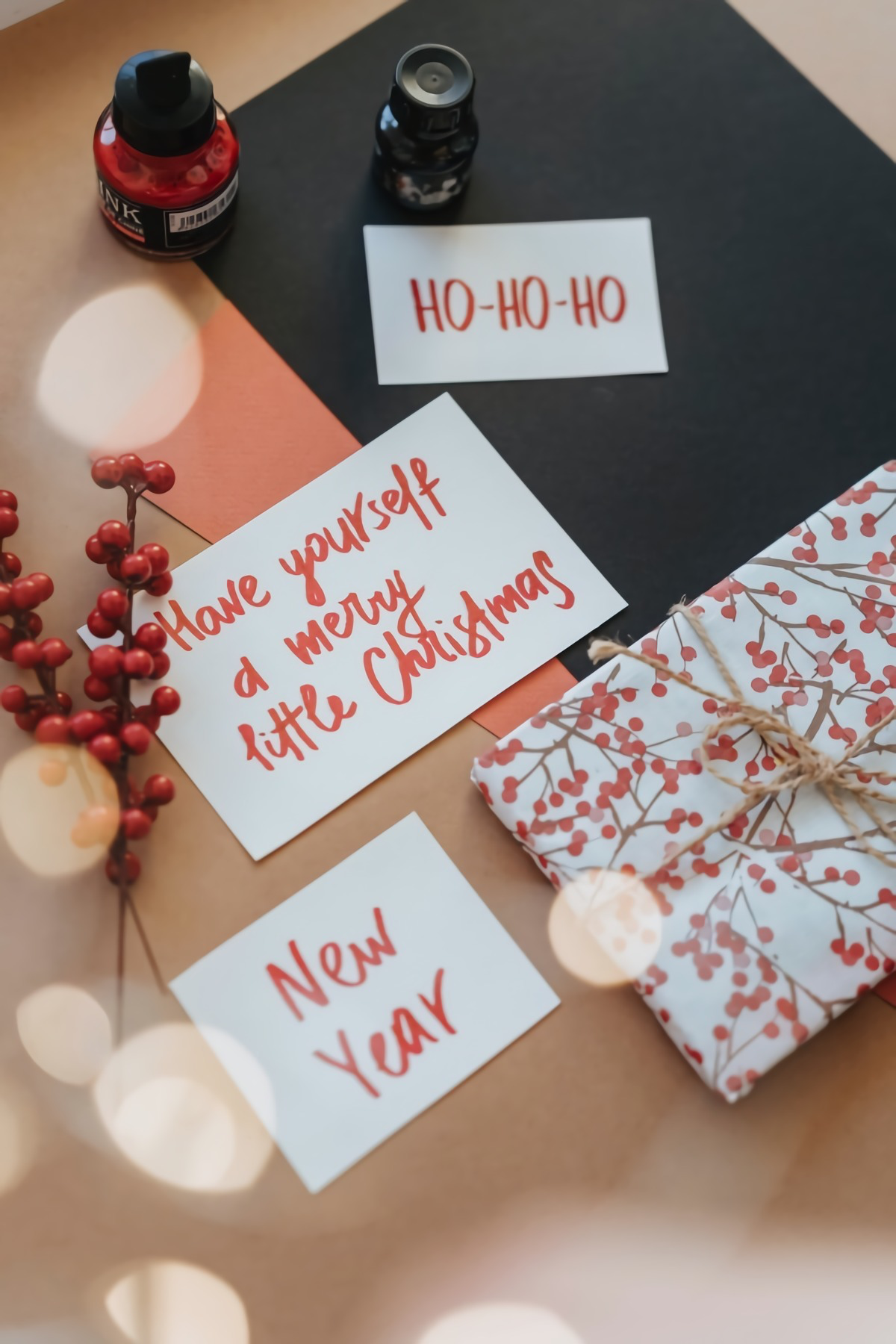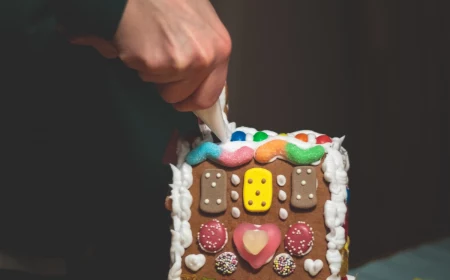Beyond the Wrapping Paper: How to Genuinely Connect When Life is Busy
I remember one holiday season a while back that just felt… off. The house was packed with gifts I’d stretched my budget to buy, and the calendar was a minefield of parties I felt obligated to attend. Honestly, there was very little joy. The breaking point for me was watching a quiet relative try to tell a story at a family dinner. He got interrupted three times before he just sighed and went silent. In that moment, it hit me: we weren’t connecting. We were just going through the motions of the holidays.
In this article
- The Quiet Need: Why This Stuff Actually Matters
- 5-Minute Connection Boosters (For When You’re Overwhelmed)
- The Art of Presence: Giving Your Full Attention
- The Written Word: A Lasting Mark of Care
- Acts of Service: Showing You Care Through Action
- Navigating Rough Waters (and Handling Rejection)
- How to Ask for Help When You’re the One Feeling Lonely
- The Most Important Boundary: Caring for Yourself
- Inspirational Gallery with Photos
That night completely changed how I approach busy seasons. It sent me down a path of figuring out how to build real bonds with people, not just check off a list of social duties.
So many of us feel that same weariness, right? The endless pressure to shop, cook, and be relentlessly cheerful can be absolutely draining. But here’s the flip side: this time of year also offers a rare chance for the world to slow down, even just a little. We can use that pause to intentionally turn toward the people who really matter to us. It’s not about big, flashy gestures. It’s about the simple, learnable skill of making someone feel seen and heard. And trust me, it’s a skill. It just requires a bit of intention, not a lot of money.

The Quiet Need: Why This Stuff Actually Matters
There’s a basic human truth at play here. We’re all wired with a deep need to belong, to feel like we’re part of a tribe and that our presence makes a difference. A ‘like’ on social media is a nice little nod, but it doesn’t even come close to filling that need. Real connection is that feeling of safety you get when you know you can be your true self—flaws and all—and still be valued.
The irony is that all the holiday cheer can sometimes make people who are struggling feel even more isolated. They see all the smiling faces and start to wonder what’s wrong with them, so they put on a happy mask to avoid bringing down the mood. This builds a wall right when we should be building a bridge. Step one is just recognizing this. Our goal should be to create a space where people feel safe enough to be authentic, not just performative.

5-Minute Connection Boosters (For When You’re Overwhelmed)
Look, I get it. Sometimes you don’t have 90 minutes for a deep conversation. If you’re feeling totally swamped but still want to make an effort, here are some quick wins. Think of these as connection snacks.
- The Specific Text: Don’t just send a generic “Happy Holidays!” to your whole contact list. Instead, text one person something specific. “Hey, I just drove past that park where we used to walk our dogs and it made me smile. Thinking of you!” It takes two minutes and feels a thousand times more personal.
- The Voice Memo: Instead of a text, send a 30-second voice note. Hearing your voice adds a layer of warmth that text just can’t match. Something as simple as, “Just wanted to say I was thinking about you and hope you’re having an okay week,” can be incredibly powerful.
- The Shared Memory Photo: Scroll through your phone, find a fun picture of you and a friend, and send it to them with a simple caption like, “Remember this day? So much fun.” It’s an instant dose of shared nostalgia.
- The Public Compliment: If you see a friend post something they’re proud of online, go beyond a ‘like.’ Leave a specific, supportive comment. “This is amazing! I know how much work you put into this project. Congratulations!”
- The Coffee Offer: Send a text that says, “I’m grabbing a coffee, can I drop one off for you? My treat.” It’s a small, practical act that says, “I see you and want to make your day a little easier.”

The Art of Presence: Giving Your Full Attention
The most valuable gift you can give another person is your undivided attention. In our world of constant pings and notifications, it’s also the rarest. Being fully present is a skill that you have to practice, and let me tell you, it’s simple but not always easy. Here are a couple of techniques that really work.
The ‘Purposefully Empty’ Visit
This is a game-changer, especially for older relatives or friends you haven’t seen in a while. Schedule a visit with absolutely no agenda. I’m serious. No plan to watch a movie, fix their Wi-Fi, or run an errand. The only goal is to just be together. I first tried this with my grandmother, telling her I wanted to come over for an hour just to have tea and chat.
The first ten minutes were a little stilted, mostly small talk about the weather. Then, a silence fell. I fought every urge to fill it with noise. After a moment, she pointed to an old photo on the mantelpiece and started telling me a story from her childhood I had never, ever heard. We ended up talking for two hours. By having no agenda, I created space for real connection to happen.

Quick tip: If the silence feels too heavy at first, try a gentle, open-ended question. Something like, “Tell me about one of the pictures in this room,” or even just, “What’s been taking up your thoughts lately?” can be a great starting point.
Focused Listening in a Crowd
Holiday parties are loud, chaotic, and a recipe for having ten different half-conversations. To make one person feel truly heard, you need to create a little bubble of focus. When someone starts talking to you, turn your entire body to face them—feet and shoulders included. This nonverbal cue screams, “You have my full attention.”
Try to hold gentle eye contact and, if it’s noisy, lean in a bit. But the real magic is active listening. That means you’re not just waiting for your turn to talk; you’re actually trying to understand them. A great way to practice this is to occasionally paraphrase what they said. For example: “So, it sounds like you’re really proud of that new project, but also totally exhausted by it.” It shows you’re getting it and gives them a chance to elaborate. The goal isn’t perfection—you’ll get distracted. The value is in the attempt.

The Written Word: A Lasting Mark of Care
Sending a card is a classic for a reason, but we can do so much better. A card with just a signature says, “I completed a task.” A card with a personal, heartfelt message says, “I was thinking specifically about you.” If you feel awkward or don’t know what to write, here’s a simple formula that works wonders.
- Start with a specific memory. Don’t just say, “Thinking of you.” Say why. For instance: “The other day it was cold and rainy, and it made me think of that afternoon we spent hiding from a storm in that museum, looking at the giant ship models.”
- Connect it to a quality you admire. This is the key. “I remember how you read every single plaque. You’ve always had that incredible curiosity, and it’s something I’ve always admired about you.” This tells them how they’ve positively impacted you.
- (Plan B: No specific memory?) If a shared memory doesn’t come to mind, especially with a strained relationship, mention something you know they care about. “I know how much you love gardening, and I hope you get some peaceful time this winter to plan next year’s blooms.” It shows you pay attention.
- Share a brief, honest update. This isn’t your annual performance review. A little vulnerability goes a long way. “Things here are good. I’m trying to learn how to bake sourdough, with very mixed results!”
- End with a simple, warm wish. “Hoping the new year brings you some peace and quiet,” is perfect. No need for drama.

Acts of Service: Showing You Care Through Action
Sometimes, actions really do speak louder. It’s about noticing a need and quietly filling it—a way of saying, “I see you’re carrying a lot, and I want to lighten your load.”
A friend with a newborn told me the best gift she received was from a neighbor who texted her every Tuesday for three months: “I’m at the grocery store. Send me your list.” It cost him almost no extra time, but for her, it was a lifeline. Think about shoveling a neighbor’s walkway before they wake up, or offering to watch a friend’s kids for two hours so they can just sit in a quiet cafe. Or you could put together a small ‘thinking of you’ care package. This doesn’t have to be pricey! A $5 magazine they’d love, a $3 fancy chocolate bar, and a $2 pack of their favorite tea. It’s a $10 gift that feels like a million bucks because it’s so thoughtful.
Heads up! This is critical. An act of service should be an offer, not an invasion. Always ask first. “I’ve got some free time on Saturday, would it be helpful if I helped with the yard work?” is worlds better than just showing up with a rake. If they say no, respect it. The offer itself is the gift.
Let’s be real: the holidays aren’t joyful for everyone. For many, they bring up grief, pain, or conflict. Acknowledging that difficulty with grace is a profound form of connection.
For a strained relationship, the goal is often just peaceful coexistence. Suggest meeting for a short time on neutral ground, like a coffee shop. “Would you be open to grabbing a coffee for an hour next week?” The public setting keeps things civil, and the time limit provides an easy exit for both of you.
For someone who is grieving, especially after a recent loss, avoid platitudes like “They’re in a better place.” The most caring thing you can do is validate their pain. A simple message like, “I know this must be an incredibly hard time of year. I was just thinking about [Name] and remembering that time they made us all laugh so hard. I’ll always cherish that memory,” is so much better. It honors the person they lost without demanding a happy response.
By the way, what happens if you try and it falls flat? You might offer to help and get turned down, or send a thoughtful text and get a one-word answer. That’s okay. Seriously. The attempt is the gift. You’re showing that you care, and you can’t control how it’s received. Don’t take it personally; you never know what’s going on in someone else’s world. The goal is the loving gesture, not a guaranteed outcome.
How to Ask for Help When You’re the One Feeling Lonely
So far, we’ve talked about giving connection, but what if you’re on the other side of the equation? What if you’re the one feeling lonely, disconnected, or sad? Asking for what you need is a huge act of courage, but it’s essential.
You don’t have to put on a brave face. It’s okay to be vulnerable with a trusted friend. Try sending a message that is both honest and specific. Instead of a vague “I’m sad,” which can leave the other person unsure how to help, try something like:
- “Hey, I’m having a bit of a tough week and feeling pretty lonely. Would you have time for a quick phone call tomorrow? I’d love to just hear a friendly voice.”
- “This time of year is always a little hard for me. Would you be up for just grabbing a simple, no-fuss dinner next week? Nothing fancy, I’d just like the company.”
- “To be honest, I’m not feeling very festive, but I don’t want to be alone. Could I just come over and watch a movie with you guys? No pressure to talk much.”
Being specific makes it easier for people to say yes and show up for you in the way you actually need.
The Most Important Boundary: Caring for Yourself
This might be the most crucial lesson of all: you absolutely cannot pour from an empty cup. Trying to be the emotional rock for everyone else is a fast track to burnout and resentment. I learned that the hard way one year when I tried to do it all—solve every problem, visit every relative, host the ‘perfect’ dinner. By the end of it, I was sick and exhausted. I hadn’t truly connected with anyone because I was too busy managing everything.
Setting boundaries isn’t selfish. It’s the necessary self-preservation that allows you to show up for others genuinely. Learn to say a gentle but firm “no.” It can feel weird at first, but it gets easier. Try phrases like:
“Thank you so much for the invitation! I don’t think I have the social energy for a big party this year, but I’d love to catch up one-on-one after things calm down.”
Or…
“I’m so honored you’d ask me to host, but I don’t have the capacity this year. Could I contribute by bringing my signature dessert instead?”
Your challenge, if you’re up for it: Pick just ONE of these ideas this week. Just one. Send the specific text. Make the ‘purposefully empty’ visit. Say a gentle ‘no’ to something draining. See how it feels. Let that one small, intentional act be your win.
Inspirational Gallery with Photos
Why does the question “How are you?” so often fall flat?
Because it’s a social script that invites a one-word answer: “Fine.” To open the door to a real conversation, you have to break the pattern. Try asking something with texture, like “What’s been taking up your brain space lately?” or “What’s a small victory you had this week?” These questions ask for a story, not just a status update.
According to research by The Gottman Institute, relationship ‘masters’ don’t rely on grand gestures. Instead, they consistently respond to their partner’s ‘bids’ for connection—small, everyday attempts to get attention, support, or affection. Acknowledging a sigh or looking up from your phone when they speak is more powerful than a dozen roses.
The Physical Gift: A beautifully wrapped sweater or gadget. It shows generosity, but its impact is often a fleeting burst of excitement.
The Shared Memory: An invitation to bake a family recipe together, go for a walk in a favorite park, or play a card game. This gift creates a story and a moment of shared presence that deepens the bond long after the day is over.
This season, consider gifting your undivided attention—it’s the one thing that’s truly irreplaceable.
Tired of the same old small talk? Keep these conversation-starters in your back pocket to go deeper, fast:
- “Tell me about a tradition you loved as a kid.”
- “What’s a skill you’d love to learn if you had more time?”
- “What’s a movie or book that has really stuck with you recently?”
- “Who has been the most influential person in your life this year?”
Instead of another store-bought item, try starting a “Memory Jar.” Find a simple glass jar and some slips of paper. Throughout your time together, encourage everyone to jot down a funny quote, a sweet moment, or a happy memory and drop it in. On a quiet evening later, you can take them out and read them aloud. It’s a living archive of your shared joy.
The card game We’re Not Really Strangers has become a cultural phenomenon for a reason. Its three levels of increasingly personal questions are specifically designed to bypass polite chatter and foster meaningful dialogue. It’s a perfect, low-pressure tool for turning a quiet evening into a moment of genuine discovery with a partner, friend, or even a family member you think you already know well.
- It builds a reliable bridge, even across long distances.
- It creates a safe space for vulnerability beyond social media updates.
- It ensures you stay in sync, even when life gets chaotic.
The secret? The “Five-Minute Friday” voice note. A quick, no-pressure check-in with a friend or family member simply sharing the high point and low point of your week. It’s a small ritual with a huge relational return.
The Listening Gap: We often listen with the intent to reply, not to understand. The most profound way to make someone feel valued is to simply offer your quiet, undivided attention. Put your phone away, turn towards them, and absorb their words without planning your response. In that focused silence, connection grows.
Look to the Swedish tradition of “Fika” for inspiration. It’s more than a coffee break; it’s a cultural institution built around deliberately pausing the day to connect with others.
- It’s Intentional: Fika is a scheduled, protected part of the day, not something squeezed in.
- It’s Social: The point is to talk and listen, away from work desks.
- It’s Simple: Just coffee or tea and a small pastry are needed. The focus is on the company, not the consumption.










